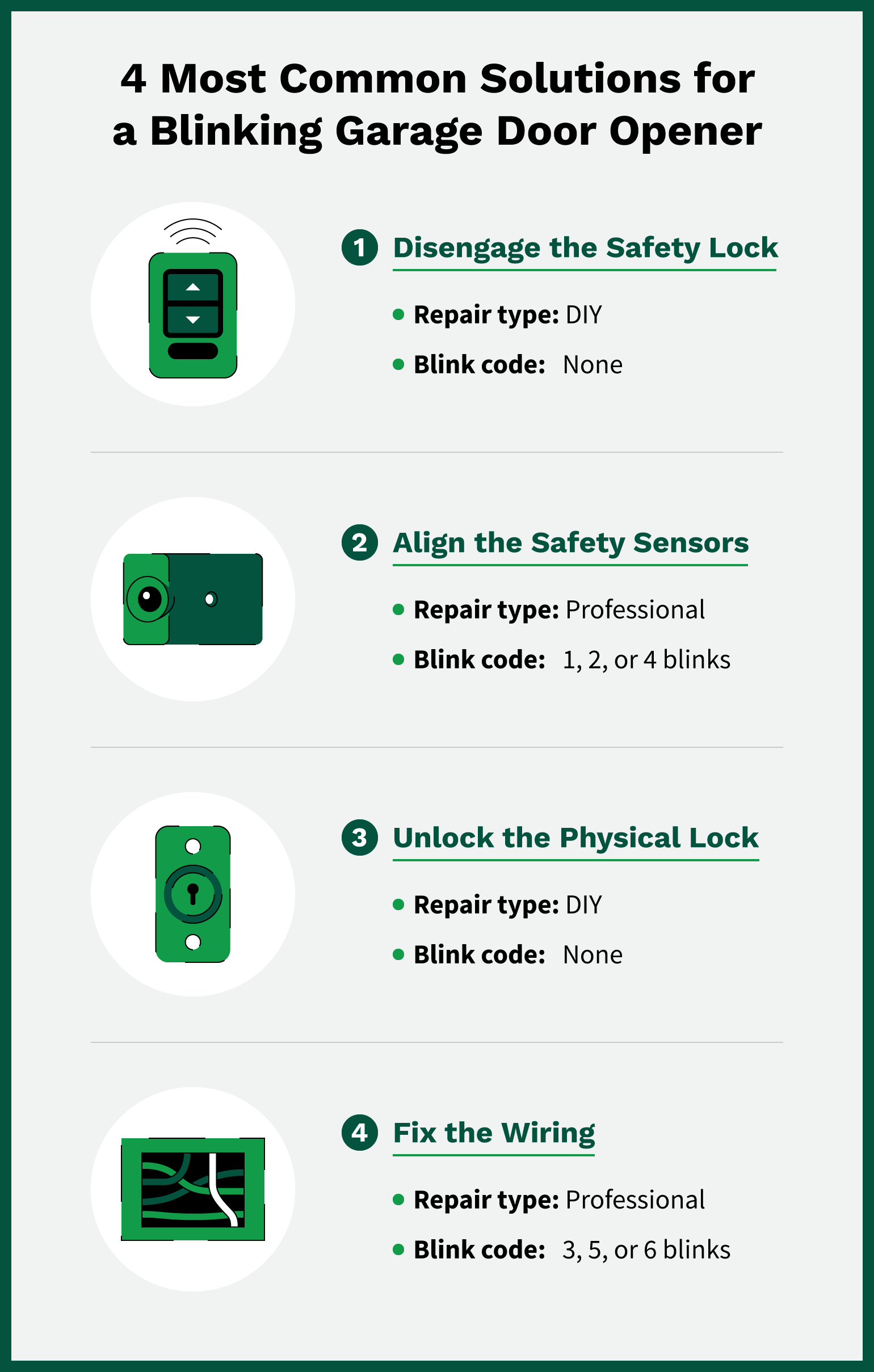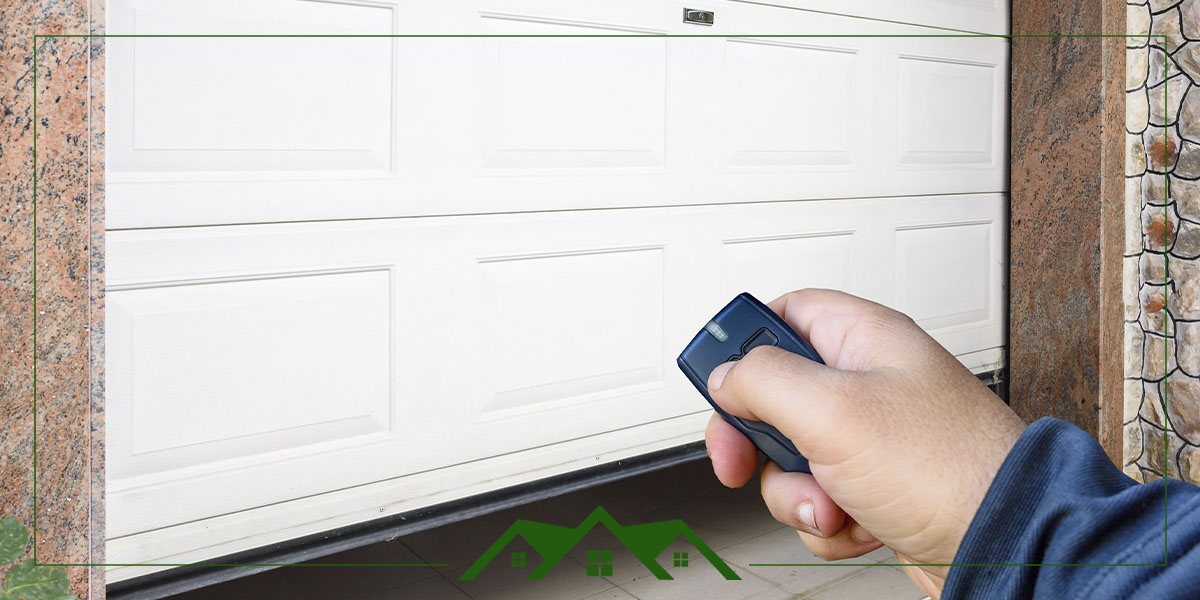Garage door sensors are the unsung heroes of home safety, silently guarding against accidents and ensuring your garage door operates smoothly. But when you notice one red and one green light on your sensors, it's a clear sign that something's amiss. Don't worry – I've been there too, and I'm here to guide you through this common hiccup.
Understanding Garage Door Sensor Lights
Before we dive into fixing the issue, let's decode what these lights are trying to tell us. Think of them as the sensors' way of communicating their status:
Green Light: This is the "all clear" signal. When you see a steady green light, it means that sensor is powered up, aligned correctly, and ready for action.
Red Light: Consider this the "Houston, we have a problem" indicator. A red light is calling for your attention and could mean several things:
- The sensors are misaligned
- There's an obstacle in the sensor's path
- The sensor itself might be failing
If the red light is solid, the sensor is working but there's an issue. A flashing red light often points to something blocking the beam.
Yellow or Orange Light: Some brands, like Chamberlain, LiftMaster, or Craftsman, use these colors. A yellow light typically means the transmitting photo eye is successfully sending an infrared beam. If this light is off, you might be dealing with a broken wire, a faulty photo eye, or a bad logic board.

Common Causes of One Red and One Green Light
When you're faced with this red-green scenario, several culprits could be at play:
Misalignment of Sensors: This is the most frequent offender. If the sensors aren't lined up properly, one might not catch the infrared beam, leading to our red-green situation.
Obstructions in the Sensor Path: Sometimes, it's as simple as a stray leaf or a small toy blocking the sensor's view. I once found my son's action figure causing this very issue!
Wiring Issues: Over time, wires can come loose or get damaged. This can disrupt power to one of the sensors, resulting in a red light.
Dirty Sensor Lenses: Dust, grime, or moisture on the lenses can interfere with the infrared beam. This is especially common in garages that see a lot of outdoor elements.
Power Supply Problems: A faulty outlet or issues with the garage door opener itself can affect one sensor while the other soldiers on.
Step-by-Step Troubleshooting Guide
Now, let's roll up our sleeves and get those sensors back in sync:
Step 1: Check Sensor Alignment
- Locate the sensors on either side of your garage door, usually about 6 inches from the ground.
- Ensure they're at the same height and pointing directly at each other.
- If they seem off, loosen the mounting brackets slightly.
- Adjust until both lights turn green, indicating proper alignment.
- Tighten the brackets to secure the sensors in place.

Step 2: Clean the Sensors
- Grab a soft, dry cloth and gently wipe the lenses of both sensors.
- Avoid water or cleaning solutions – they can damage the sensors.
- For stubborn grime, use a slightly damp cloth, but dry thoroughly afterward.
Step 3: Inspect the Wiring
- Follow the wires from each sensor back to the garage door opener.
- Look for any frayed, chewed, or disconnected wires.
- Make sure the white wires connect to the white terminal and the black/white wires to the gray terminal.
- If you spot damaged wires, they may need replacing. Don't hesitate to call a pro if you're not comfortable with electrical work.
Step 4: Test the Sensors
- Clear the area around the sensors.
- Press the button to close the garage door.
- While it's closing, wave an object (like a broom handle) in front of the sensors.
- The door should immediately reverse if the sensors are working correctly.
Step 5: Replace the Sensors if Necessary
If the above steps don't solve the issue, you might need new sensors:
- Purchase compatible replacement sensors for your garage door opener model.
- Turn off power to the opener at the circuit breaker.
- Remove the old sensors and install the new ones in the same spots.
- Connect the wires, matching colors to the appropriate terminals.
- Restore power and test using the method from Step 4.
Safety First!
Remember, safety is paramount when working on your garage door system:
- Always cut power to the opener before starting any repairs.
- Use a sturdy step ladder on level ground.
- Wear work gloves and safety glasses.
- When in doubt, consult a professional. There's no shame in calling for backup!
Environmental Factors to Consider
Your garage door sensors aren't just battling dust and debris – they're up against Mother Nature too:
- Extreme temperatures can make sensors less responsive.
- High humidity can lead to condensation inside the sensor housing.
- Direct sunlight can interfere with the infrared beam.
- Windy conditions can blow debris onto the lenses.
To combat these environmental challenges, consider installing protective housing for your sensors and perform regular maintenance checks, especially during seasonal changes.
Tools of the Trade
To tackle sensor issues like a pro, arm yourself with these tools:
- Step ladder
- Pliers
- Work gloves
- Wire cutters
- Screwdriver set
- Wrench set
- Wire strippers
- Safety glasses
- Blue wire nuts
- Electrical tape
- Clean cloth
- Replacement sensors (just in case)
Preventive Maintenance: Your Best Defense
An ounce of prevention is worth a pound of cure, especially when it comes to garage door sensors. Here's how to keep them in top shape:
- Monthly lens cleaning with a soft, dry cloth.
- Regular alignment checks, especially after stormy weather.
- Quarterly wiring inspections for wear or damage.
- Monthly functionality tests.
- Keep the sensor area clear of clutter.
- Consider an annual professional inspection.

By making these practices part of your routine, you'll catch potential issues before they become real problems.
Wrapping Up
Troubleshooting garage door sensors might seem daunting at first, but with this guide, you're well-equipped to tackle the task. Remember, these sensors are your first line of defense against accidents, so keeping them in good working order is crucial for your family's safety.
If you ever feel overwhelmed or encounter a problem you can't resolve, don't hesitate to call in a professional. There's no substitute for expert help when you need it.
By maintaining your garage door sensors, you're not just fixing a piece of equipment – you're ensuring the safety and security of your home. Stay vigilant, perform those regular checks, and enjoy the peace of mind that comes with a properly functioning garage door system. After all, a safe home is a happy home.

